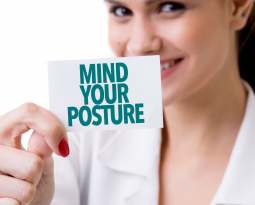
BACK SURGERY MAY BE BIG BUSINESS BUT IT IS DESTROYING YOUR SPINE
BACK SURGERY MAY BE BIG BUSINESS BUT IT IS DESTROYING YOUR SPINE
Back surgery is a booming business. About 500,000 Americans undergo surgery each year for low back problems alone. According to the Agency for Healthcare Research and Quality, we spend more than $11 billion each year on operations to relieve back pain. Unfortunately, it doesn’t always buy relief.
But surgery should not be the treatment of choice for most people with low back pain, according to a report from Johns Hopkins Medicine. Fewer than 5 percent of people with back pain, according to Johns Hopkins, are good candidates for surgery.
Frighteningly more than 25% of back surgeries ended with increased instability1. Which can often lead to increased pain, and the need for further surgeries. When deciding if you are in need of an invasive operation, it is best to obtain several opinions before deciding to undergo irreversible surgery.
Further research has shown that increased pain is not the only problem that occurs after back surgery. Investigations have begun showing that spinal degeneration is twice as likely to occur to individuals whom have received spinal fusions5. Radiographic changes are most likely to occur above the level of the spinal fusion. Even in the chance that the surgery does resolve the original problem, that same surgery is creating new problems in areas of the spine where there were none.
What about the individuals that have gained relief form pain after the surgery? Surely this means that the surgery worked for them right? Yes and No. They have temporarily received relief of pain from their current problem. However, as previously mentioned the corrective surgery often causes new problems. The research shows that even in asymptomatic post surgery patients, biomechanical alterations occur4. Reviewing follow up radiographs these asymptomatic patients can still have new spinal degeneration occurring in their spines from the surgery2.
Solution? Maintain good posture. If your posture is correct your spine is aligned correctly and your body is functioning properly, which reduces or even eliminates spinal degeneration. In patients with correctly aligned spines even after surgery there were minimal levels of new spinal degeneration compared to those with incorrect spinal posture in the cervical or lumbar spine3.
For those looking to avoid back surgery, it’s time to listen to your mother. Sit up straight, quit slouching, and maintain good posture. For those of you who have begun to develop back problems or pain, your first choice of treatment before considering non-reversible spine surgery should be a conservative therapy. There are many non-invasive therapies available. Some that have been shown to greatly improve spinal problems are: Chiropractic, Postural Correction therapy, Laser therapy massage, exercise, Pilates, yoga and even weight loss. Remember according to John Hopkins Medical center fewer than 5% of back problems are good candidates for spinal surgery. The great point about conservative treatment is if one option doesn’t work, you can still try another. The option for back surgery will always be there. You can come back to that if you have exhausted the other options.
For more information on how your posture may be causing your health problems, how to stay healthy through proper posture, or for more ways to improve your posture contact us at American Posture Institute
Reference:
- Aota, Y., Kumano, K., & Hirabayashi, S. (1995). Postfusion instability at the adjacent segments after rigid pedicle screw fixation for degenerative lumbar spinal disorders. Journal of Spinal Disorders & Techniques, 8(6), 464-473
- Hilibrand, A. S., & Robbins, M. (2004). Adjacent segment degeneration and adjacent segment disease: the consequences of spinal fusion?. The Spine Journal, 4(6), S190-S194.
- Kumar, M., Baklanov, A., & Chopin, D. (2001). Correlation between sagittal plane changes and adjacent segment degeneration following lumbar spine fusion. European spine journal, 10(4), 314-319.
- Park, P., Garton, H. J., Gala, V. C., Hoff, J. T., & McGillicuddy, J. E. (2004). Adjacent segment disease after lumbar or lumbosacral fusion: review of the literature. Spine, 29(17), 1938-1944.
- Kumar, M. N., Jacquot, F., & Hall, H. (2001). Long-term follow-up of functional outcomes and radiographic changes at adjacent levels following lumbar spine fusion for degenerative disc disease. European Spine Journal, 10(4), 309-313.


















